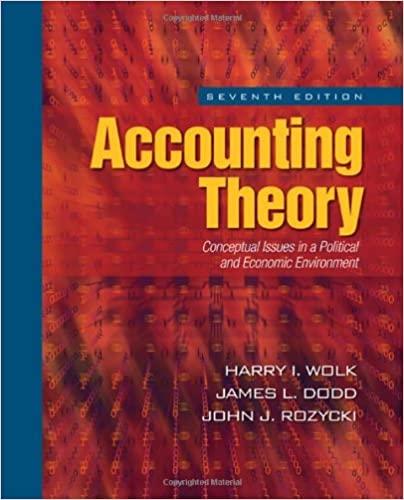Question
Premium Investments Ltd. bought the following bond investment: $5,000,000 bonds of Trans-BC Operations Ltd. The bonds were purchased 1 Feb 20X5. Interest at 4% is
Premium Investments Ltd. bought the following bond investment: $5,000,000 bonds of Trans-BC Operations Ltd. The bonds were purchased 1 Feb 20X5. Interest at 4% is payable semi-annually on January 31 and July 31. The bonds mature in four years on 31 January 20X9. The current market rate at the time of purchase was 3%. The company has classified these bonds as AC. Premium has a 31 January year-end.
At 31 January 20X6, Premium assessed the credit risk of the Trans-BC bonds to have not changed significantly. They estimated expected credit losses at $85,000.
At the end of 31 January 20X7, the credit risk of Trans-BC bonds was assessed to have changed significantly and the expected credit losses were estimated to be $625,000.
During 20X7, Trans-BC suffered significant losses and contacted Premium about possibly renegotiating its contractual payments. Interest payments were received on July 31 and January 31 as required. Based on discussions with Trans-BC, Premium estimated that future expected cash flows would be as follows: $95,000 paid semi-annually on 31 July and 31 January with a final payment of $3,800,000 on 31 January 31 20X2 as follows:
Period Cash Payment $
July 31 20X8 $ 95,000
Jan 31, 20X9 95,000
Jan 31, 20X9 95,000
Jan 31, 20X0 95,000
July 31 20X0 95,000
Jan 31, 20X1 95,000
July 31 20X1 95,000
Jan 31, 20X2 95,000
Jan 31, 20X2 3,800,000
Required:
1. Calculate the price of Trans-BC bonds paid by Premium. (Do not round your intermediate calculations and round the final answer to the nearest whole dollar amount.)
2. Construct a table that shows interest revenue reported by Premium and the carrying value of the investment for each interest period to maturity using the effective interest method. (Do not round your intermediate calculations and round the final answers to the nearest whole dollar amount.)
3. Prepare the journal entries related to the bond for fiscal years 31 January 20X6, 20X7, and 20X8, given the additional information. (If no entry is required for a transaction/event, select "No journal entry required" in the first account field. Round the final answers to the nearest whole dollar amount.)
4-1. Prepare the revised amortization schedule based on the revised payments. (Round the final answer to the nearest whole dollar amount.)
4-2. Prepare the journal entries for the payments received during the fiscal year 31 January 20X9. (If no entry is required for a transaction/event, select "No journal entry required" in the first account field. Round the final answer to the nearest whole dollar amount.)
Step by Step Solution
There are 3 Steps involved in it
Step: 1

Get Instant Access to Expert-Tailored Solutions
See step-by-step solutions with expert insights and AI powered tools for academic success
Step: 2

Step: 3

Ace Your Homework with AI
Get the answers you need in no time with our AI-driven, step-by-step assistance
Get Started


